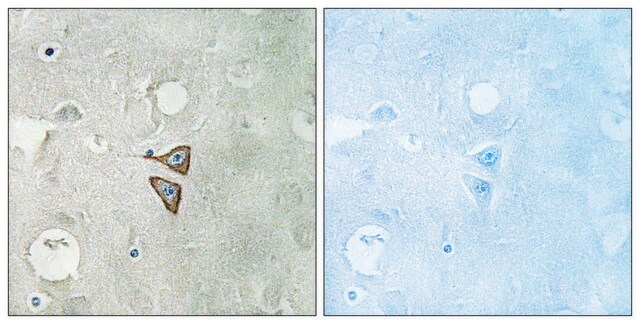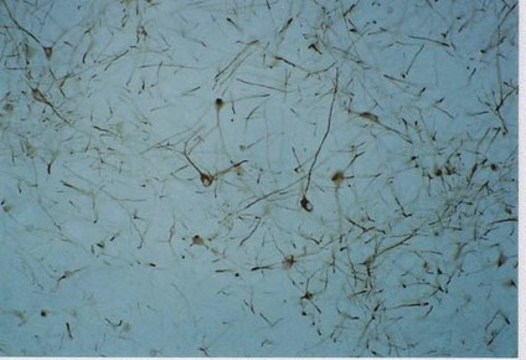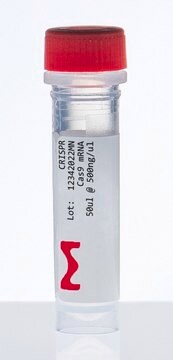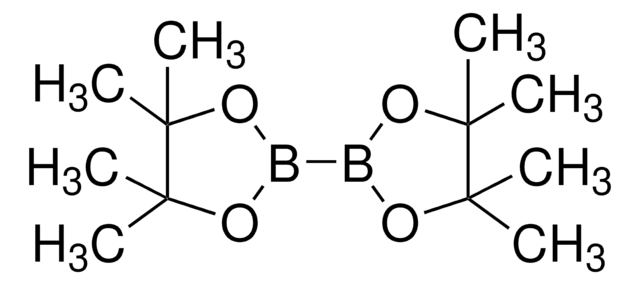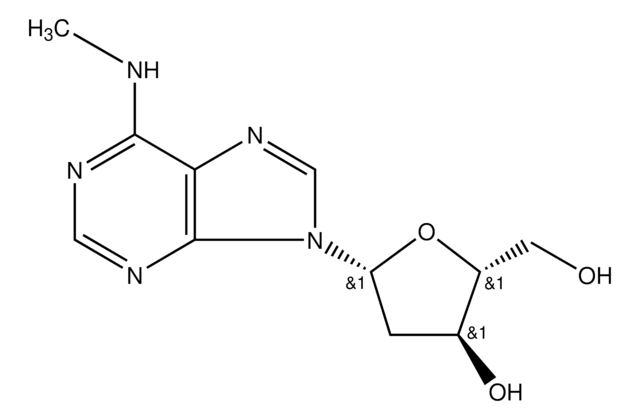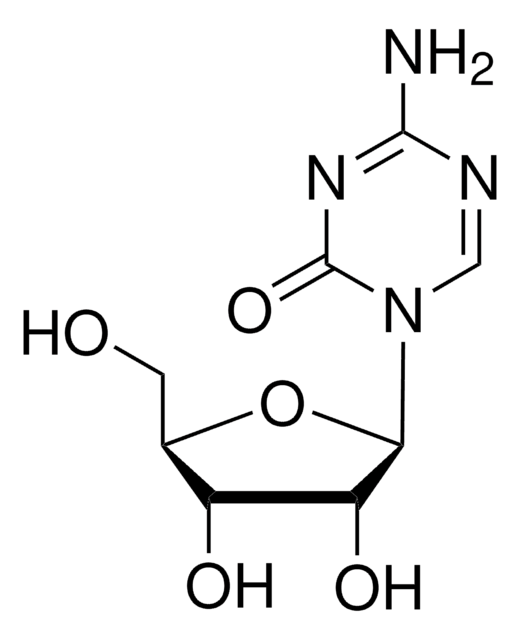おすすめの製品
由来生物
rabbit
品質水準
結合体
unconjugated
抗体製品の状態
whole antiserum
抗体製品タイプ
primary antibodies
クローン
polyclonal
フォーム
lyophilized powder
分子量
antigen ~55 kDa
交差性
mouse (predicted), rat
テクニック
immunocytochemistry: 1:800 using PLP fixed rat brain sections
western blot: 1:800 using whole brain homogenate
UniProtアクセッション番号
輸送温度
wet ice
保管温度
−20°C
遺伝子情報
mouse ... Oprd1(18386)
rat ... Oprd1(24613)
詳細
Opioid peptides are endogenous neuromodulators that play a major role in nociception by interacting with several membrane receptors. Molecular cloning techniques have characterized the nucleotide sequence of several distinct opioid receptors, including the δ-, κ- and μ-opioid receptors.1 The cloned receptors are highly homologous (65%), differing only at the N- and C-termini and at the extracelluar loops that confer binding specificity. All three receptors interact with heterotrimeric G proteins.
δ-Opioid receptors (DOR) are located postsynaptically on pallidostriatal feedback neurons. DORs also modulate nociception presynaptically in the periaqueductal gray where immunolabeling of DOR has been shown to be intracellular and often associated with large dense-core vesicles. Additionally, receptor autoradiographic investigations have localized DORs to the external plexiform layer of the olfactory bulb, the nucleus accumbens, several layers of the cerebral cortex and several nuclei of the amygdala.
References
1. Goldstein, A. Trends Pharmacol. Sci., 8, 456-459 (1987).
δ-Opioid receptors (DOR) are located postsynaptically on pallidostriatal feedback neurons. DORs also modulate nociception presynaptically in the periaqueductal gray where immunolabeling of DOR has been shown to be intracellular and often associated with large dense-core vesicles. Additionally, receptor autoradiographic investigations have localized DORs to the external plexiform layer of the olfactory bulb, the nucleus accumbens, several layers of the cerebral cortex and several nuclei of the amygdala.
References
1. Goldstein, A. Trends Pharmacol. Sci., 8, 456-459 (1987).
特異性
The antiserum is specific for the COOH terminal of the opioid δ receptor.
免疫原
Peptide corresponding to the carboxy-terminal of the opioid δ receptor covalently attached onto a carrier protein.
免責事項
Unless otherwise stated in our catalog or other company documentation accompanying the product(s), our products are intended for research use only and are not to be used for any other purpose, which includes but is not limited to, unauthorized commercial uses, in vitro diagnostic uses, ex vivo or in vivo therapeutic uses or any type of consumption or application to humans or animals.
適切な製品が見つかりませんか。
製品選択ツール.をお試しください
保管分類コード
11 - Combustible Solids
WGK
WGK 3
引火点(°F)
Not applicable
引火点(℃)
Not applicable
個人用保護具 (PPE)
Eyeshields, Gloves, type N95 (US)
適用法令
試験研究用途を考慮した関連法令を主に挙げております。化学物質以外については、一部の情報のみ提供しています。 製品を安全かつ合法的に使用することは、使用者の義務です。最新情報により修正される場合があります。WEBの反映には時間を要することがあるため、適宜SDSをご参照ください。
Jan Code
O0382-BULK:
O0382-.1ML-PW:
O0382-VAR:
O0382-.1ML:
S R Childers
Life sciences, 48(21), 1991-2003 (1991-01-01)
Although pharmacological data provide strong evidence for different types of opioid receptors (e.g., mu, delta, and kappa), they share many common properties in their ability to couple to second messenger systems. All opioid receptor types are coupled to G-proteins, since
M F Olive et al.
The Journal of neuroscience : the official journal of the Society for Neuroscience, 17(19), 7471-7479 (1997-09-20)
Parallel studies have demonstrated that enkephalin release from nerve terminals in the pallidum (globus pallidus and ventral pallidum) can be modulated by locally applied opioid drugs. To investigate further the mechanisms underlying these opioid effects, the present study examined the
The delta-opioid receptor: molecular pharmacology, signal transduction, and the determination of drug efficacy.
R M Quock et al.
Pharmacological reviews, 51(3), 503-532 (1999-09-02)
P A Zaki et al.
Annual review of pharmacology and toxicology, 36, 379-401 (1996-01-01)
Since the discovery of opioid receptors over two decades ago, an increasing body of work has emerged supporting the concept of multiple opioid receptors. Molecular cloning has identified three opioid receptor types--mu, delta, and kappa--confirming pharmacological studies that previously postulated
B L Kieffer
Cellular and molecular neurobiology, 15(6), 615-635 (1995-12-01)
1. Opioid peptides are a family of structurally related neuromodulators which play a major role in the control of nociceptive pathways. These peptides act through membrane receptors of the nervous system, defined as mu, delta and kappa and endowed with
ライフサイエンス、有機合成、材料科学、クロマトグラフィー、分析など、あらゆる分野の研究に経験のあるメンバーがおります。.
製品に関するお問い合わせはこちら(テクニカルサービス)